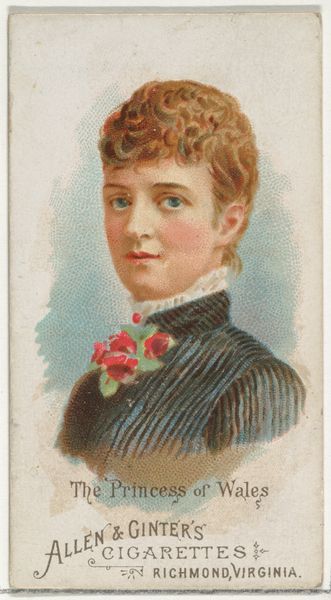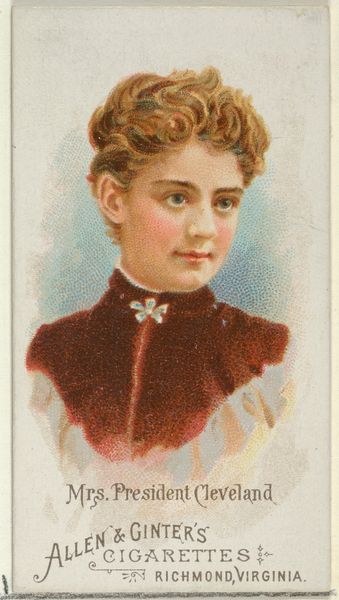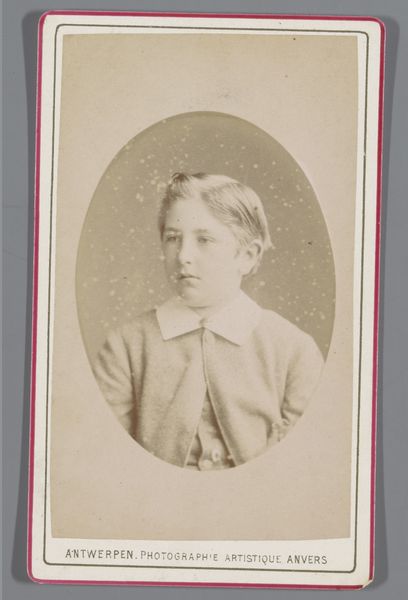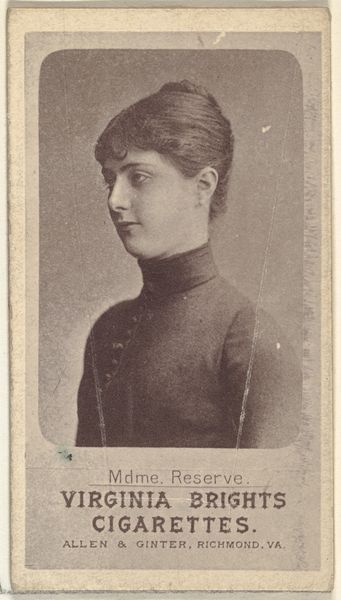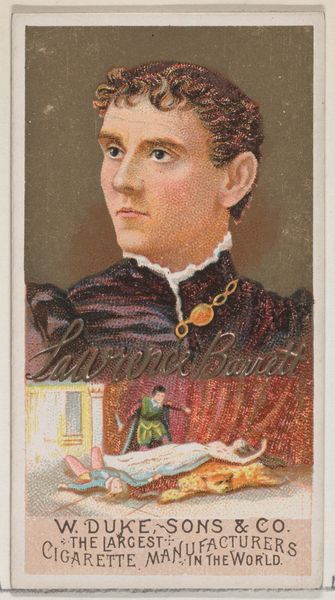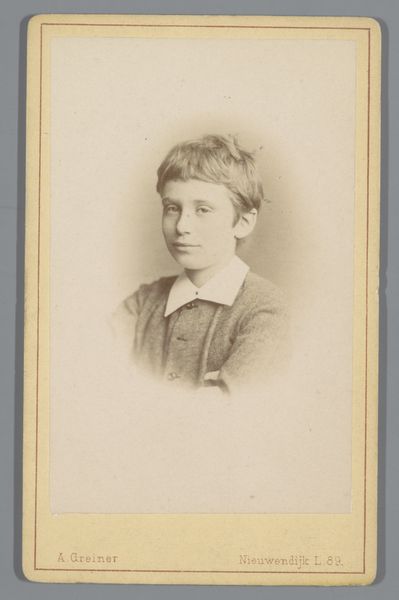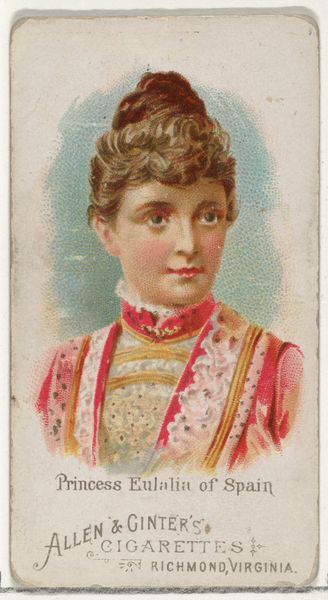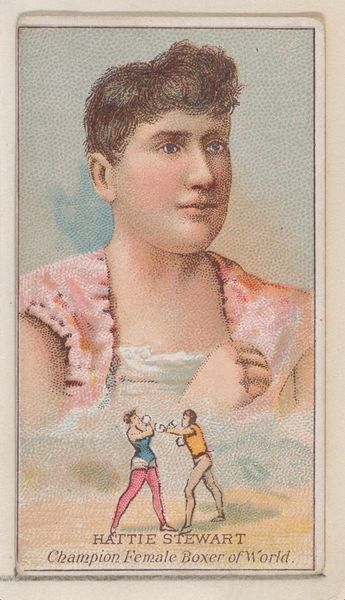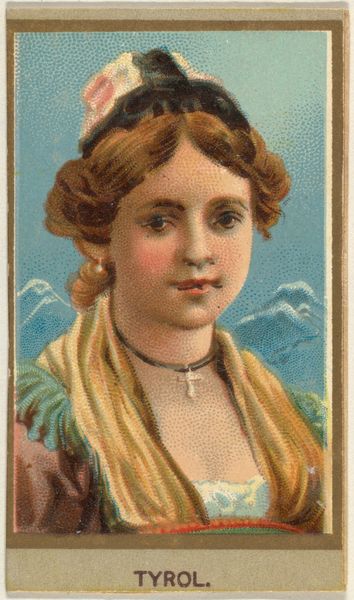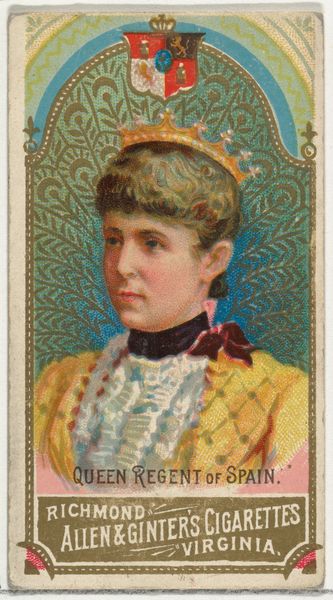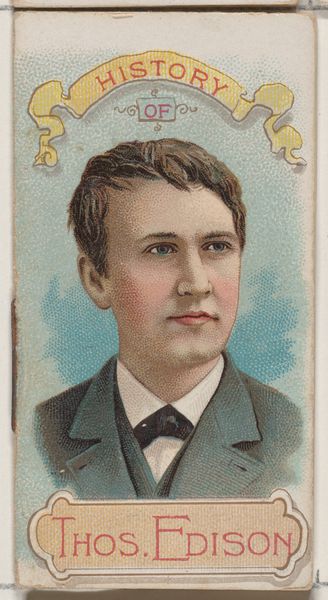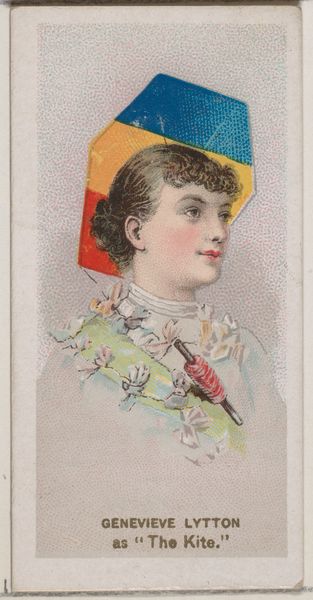
Mrs. E.J. Nicholson, The New Orleans Daily Picayune, from the American Editors series (N1) for Allen & Ginter Cigarettes Brands 1887
0:00
0:00
drawing, graphic-art, mixed-media, print, photography, poster
#
portrait
#
drawing
#
graphic-art
#
mixed-media
# print
#
impressionism
#
photography
#
poster
Dimensions: Sheet: 2 3/4 x 1 1/2 in. (7 x 3.8 cm)
Copyright: Public Domain
Editor: Here we have "Mrs. E.J. Nicholson, The New Orleans Daily Picayune," a mixed-media print from 1887 by Allen & Ginter, part of their American Editors series. The subject seems almost idealized, with those rosy cheeks. What do you see in this piece beyond a simple portrait? Curator: I see a deliberate construction of identity deeply embedded in its historical context. Consider the time: 1887. Post-Reconstruction America. The portrayal of a woman, specifically Mrs. Nicholson, who was a newspaper publisher, becomes incredibly significant. This isn't just about aesthetic representation; it's a statement about female agency and the shifting roles of women in the public sphere, especially in the South, post-Civil War. Editor: So you’re saying her representation in this mass-produced format elevates her status? Curator: Precisely. Think about the function of these cards – they were inserts in cigarette packs, a form of popular culture, widely distributed. To include a woman, and specifically a woman who ran a newspaper in New Orleans, challenges the patriarchal norms of the time. It makes her visible, a figure to be reckoned with. This portrait isn't merely celebratory; it's a quiet act of defiance against societal expectations, suggesting that women too, could occupy positions of power and influence within media and culture. How might her specific context of New Orleans impact how she was perceived, given the intersection of race, gender, and power after the Civil War? Editor: I see your point. Thinking about the intersection of race, gender, and power really complicates the image. It pushes beyond a simple portrait to make a cultural argument. I'll never see these collectible cards the same way again! Curator: That is the power of engaging with art through a critical lens! There is a lot of power to be found by questioning how the construction and presentation of women intersects within a racial and power dynamic of the period.
Comments
No comments
Be the first to comment and join the conversation on the ultimate creative platform.
